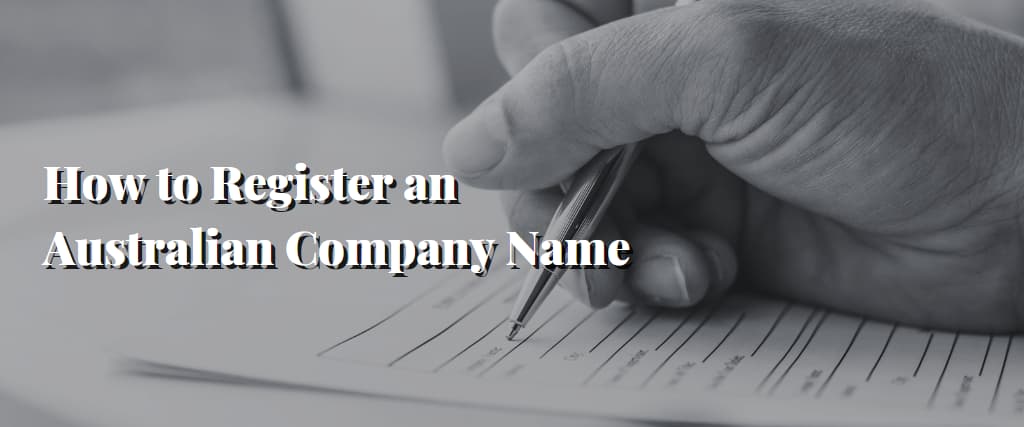It is normal practice for individuals to launch their businesses as single proprietorships.
According to our findings, approximately 72% of initial trade businesses take this form.
We’ve all probably heard the term “sole trader,” but what does it imply in practice?
This blog examines often-asked questions and common misunderstandings about becoming a sole proprietor.
Sole Trader Types
A solitary trader is a business owner who is also the only employee.
The person and the company are inseparable in their eyes; the person is the business, and the industry is the person.
A sole trader is an individual who operates a business on their own, according to the Australian Taxation Office (ATO).
You have complete authority over all decisions when running a business as a sole proprietor.
Every component of the company is legally your responsibility. No one can take on another person’s debts or losses.
The most telling characteristic is that a sole trader uses the same Tax File Number (TFN) for himself and their enterprise.
Common Belief
Some misunderstandings exist among skilled workers who are venturing into entrepreneurship.
It’s important to note that “single trader” refers to a specific type of corporate organisation, not just any tradesperson.
You can’t call your company a sole proprietorship even if you’re the only employee.
It’s common to hear contractors argue that they don’t require an ABN because their annual revenue is below $75,000.
They are conflating the need to register for ABN and GST.
While GST registration is mandatory if your firm anticipates yearly revenue over $75,000, all enterprises require an ABN regardless of income.
The idea that a one-person business has no employees is another common misunderstanding. You can be a sole proprietor and still have employees.

Can a Sole Proprietor Have Workers?
As far as they continue to be sole proprietorships can have staff. A limited liability company is not required to hire staff as a sole proprietorship.
Whether you’re looking for a highly trained artisan or just some extra help around the office, there are several options:
- Using the standard Pay As You Earn (PAYE) method of hiring employees
- Using the services of self-employed people
- Hiring people for temporary or intermittent labour
- While it is possible for a sole proprietor to hire others, doing so requires careful preparation of the payroll system.
Independent Contractor Work
A limited liability company’s director is an employee of the company, which is a significant distinction from a sole proprietor.
A corporation can employ people, including its management, because it is a separate legal entity. But you can’t hire yourself as a sole proprietor.
Since the sole proprietor is also the company, they cannot set themselves apart and get PAYE as an employee.
However, as long as you register as an employer, you can hire as many people as you need.
Can a Sole Proprietor Have More Than One Worker?
It is legal in Australia for a lone proprietor to hire workers. Under Australian law, a sole proprietor may employ as many people as they need to run their business.
However, Sole Proprietors should be aware of their legal responsibilities as employers. Examples of such things could be:
- Creating a risk-free workplace
- Providing appropriate compensation, including salaries, super, and benefits,
- Maintaining a safe and healthy work environment
- Employers with staff members in Australia must register for PAYG withholding and make payments on behalf of those staff members.
Sole proprietors should consult an accountant who handles taxes or an attorney to ensure they follow all employment rules and regulations.
As a Sole Proprietor, What’s the Distinction Between PAYG and STP?
If you are a sole proprietor in Australia and have employees, you must keep records for the Australian Taxation Office (ATO) related to Pay-As-You-Go (PAYG) withholding tax.
Withholding of income tax from salaries and other transactions, as well as the HELP loan repayments or the Medicare Levy, all fall under PAYG withholding tax.
If you have withholding tax obligations, you must report PAYG withholding information to the ATO periodically.
You can meet your PAYG reporting requirements using Single Touch Payroll (STP) compliance.
Employers must record employee earnings, PAYG withholding tax, and payments to the ATO using an ATO-authorized STP software.
What About a Business Name for a Sole Proprietorship?
The Australian Securities and Investments Commission (ASIC) requires that any company in Australia use a legally recognised “business name.”
Unless you operate under your name, conducting business without a registered business name with the Australian Securities and Investments Commission (ASIC) is illegal.

How to Register an Australian Company Name
Step 1: Once logged in to Asic Connect, go to the “Licenses and Registrations” tab.
You can sign up for ASIC Connect online if you need an account.
Select ” No ” While prompted to whether you own a business while logging in for your initial time, select “No.” To sign up, an ASIC key is not required.
Step 2: Pick Your Company’s Name From the List
Choose “company name” from the pull-down menu, then click “Go.” Take the time to read the details and check all the boxes that apply. Click the “Start” button.
Step 3: Indicate The Australian Business Number (ABN)
Registering a business name necessitates either the possession of or application for an Australian Business Number (ABN). Click the appropriate box, add your ABN, and proceed. A valid ABN will not have any spaces between the numbers.
Step 4: Fill in the Proposed Company Name.
If you want to register the suggested business name, please enter it here precisely as you want it to appear. The case of company names is essential.
Step 5: Pick a Time Frame to Register
You can choose between a one-year and a three-year registration period. You’ll need to get a new one once this one expires.
Step 6: Business Name Holder Information
Details about the proposed company name holder (such as their date of birth) must be provided.
Step 7: Type in the Addresses for the New Company Name
Put the prospective company’s addresses here.
Step 8: Verify Your Eligibility to Use the Name
The Business Names Registration Act of 2011 states that a person may not be prohibited from holding a business name or convicted of criminal offences related to maintaining a company name.
Step 9: Review Your Application
Verify the accurate spelling of your company name on the application. Check the boxes declaring your eligibility and confirming your application authority.
Step 10: Confirm Your Transaction After Making Payment
You can pay with a credit card or BPAY, or we can invoice you. Please make payment within ten days to avoid cancelling your application and the requirement to reapply.
A confirmation box will appear after successful payment. Your company name registration should take place within 48 hours of receiving payment.

Suggestions for Choosing a Company Name
1. Make the Name Stick
Creating a memorable name is to make it simple and difficult to forget. In a perfect world, it lets consumers identify your company whenever they use that item. That’s why they call you when they need anything, whether plumbing materials or paint.
You should only go with something generic if you want consumers to remember your company, but you also want to go in the right direction.
It’s crucial to balance being too vague and too apparent if you want your customers to remember you.
2. Create a Name for Yourself in the Marketplace
Branding is the process of communicating to consumers the image you have for your company. It’s a chance to share something of yourself and your values with the world.
If your business specialises in fried chicken, you could call it “Kel’s Fried Chicken,” but that doesn’t tell clients much about you or your business.
To make a good impression on potential clients, pick a name that conveys your services and philosophy.
Kel, for instance, may target clients with a moniker that conveys her expertise in fried chicken with added spices produced with free-range hens.
3. SEO, or Search Engine Optimization, Is Vital.
Customers will likely discover your company like you do today—through an online search—when deciding where to eat, shop, or vacation.
If you want your firm to do well in these searches, it’s in your best interest to learn about search engine optimisation (SEO) and how it might guide your choice of a company name.
Search engine optimisation (SEO) is optimising a website to rank higher than its competitors on search engines such as Google.
Search engines place a higher emphasis on informative and specific keywords.
Consider the terms potential customers might use to find your product or service on Google when creating a name for your company. That way, your company can improve its chances of connecting with the right customers at the right moment.
4. Gain Insight Into Your Clientele Through Social Media
It’s no secret that social media can do wonders for your company’s bottom line. You may reach your target audience using social media platforms like Facebook, Instagram, and LinkedIn.
Think about the terms your target audience may use to describe your business on social media and evaluate whether or not any of those words might be suitable as a business name (much like SEO).
5. Verify the Existence of Trademark and Name Registrations
Check the availability of a business name with ASIC’s Business Name Availability tool. If you want to make sure your company name is appropriate for your location, you may use this tool to examine where other companies with similar names operate.
To see if a trademark equivalent to your proposed business name already exists, you can do a search using IP Australia.
6. Social Media Research
Look around on social media sites to see whether you can find competitors with names that sound like yours. Because it’s easy to mislead clients that way, and they might go elsewhere.
Before settling on a business name, it’s a good idea to consider potential handles and hashtags so you can be sure it will be memorable online and in person.
7. Search the Market for Corresponding Brands
While doing your homework, you may find companies with names that sound exactly like yours. With over 2 million small enterprises in Australia, there might be some overlap occasionally.
Make a note of companies with similar names if you come across them. From there, consider how to make your company’s name stand out.
8. Put Your Brand to the Test on Potential Clients
No one better to put your company’s moniker to the test than your target demographic. They will give you honest opinions on your name’s merits and flaws.
This demographic can include people you know, people you meet on the street, or respondents to an online poll.
To get the ball rolling, you should survey your social circle about your potential company’s moniker and have them spread the word to others for comments. Create a quick survey concerning your company’s name and encourage your social media followers to fill it out.

Two ABNs for a Sole Proprietorship?
It is possible to register many identically structured firms under a single ABN. Take, for illustration, a store offering infant apparel named “Only For Babies.”
You currently have an ABN and a business name registered as a sole trader. You might use the same ABN to set up a shop as a sole trader selling women’s clothing.
However, if you plan on operating your new store as a corporation or a partnership, you must apply for a new ABN.
In a nutshell, various businesses cannot share the same ABN. That’s because multiple companies have distinct tax obligations and require their ABNs.
As a result, it’s possible to obtain more than one ABN if your enterprise has more than one legal identity.
ABN Registration
To qualify for a Sole Trader ABN, you must be the business’s sole owner and take full responsibility for its operations and debts. You can still hire people despite this, but you can’t hire yourself.
The application process is quick and easy if you have all the necessary information and use the Australian Business Register website.
The items you’ll require are detailed in the list below. However, only some items on this list will be necessary for your company.
- The Tax File Number
- The registered agent number of your tax or BAS agent. Many lone proprietors choose not to hire an agent.
- If you use a professional advisor (again, this is optional), please include their identification number below.
- If you have done this before, you can use your old ABN.
- Some only require an Australian business number (ACN) or registered body number (ARBN). However, companies and registrable organisations can obtain them from the Australian Securities and Investments Commission (ASIC).
- The date your business must begin operations to obtain an ABN. This date must be at most six months in the future.
- The entity’s legal name should appear on all official documents or legal papers. Many sole traders use their names.
- All official or legal documents must use the official or legal name of the entity. Many solo proprietors operate under that moniker.
- Official points of contact. You can mention your tax or BAS representative in this section if they have the authority to make updates or adjustments on your behalf.
- Details about what you do for a living. Where does your company fit in?
- Address, mailing address, email, and telephone number for the enterprise. There can be no prefixes like “support@” or “info@” in your email address; instead, it must begin with your given name.
Upon submitting your ABN application, you should receive an instant online confirmation if you have provided all the necessary information.
When and How To Cancel Your ABN
You’ll probably need to cancel your ABN if you’re:
- closing down your business
- changing your business structure
- no longer operating your business
You’ll need to cancel your ABN when changing from a:
- sole trader to a company
- sole trader to partnership
- partnership to company
- Cancel your ABN on the ABR website.
If Your Business Details Change
You must ensure your ABN details are up to date. Ensure you update your details within 28 days of becoming aware of the changes.
Visit the Update your ABN details page on the ABR website for more information and to update your ABN information.
If you change your business structure, you may have to register for a new ABN.
When you change your business, you may need to update your business name details with the Australian Securities & Investments Commission (ASIC).

Why Use a Sole Trader Structure?
For anyone starting a trade business, setting up as a sole trader will be the cheapest, fastest and easiest option.
It’s a DIY option that can cost virtually nothing to set up. The only cost will be if you wish to register a business name, and even that is only around $30.
Registering your ABN and registering for GST is free if you go directly through the Government’s online service.
Our data shows that 72% of tradies start their business as sole traders, making it the most common option.
However, this isn’t to say being a sole trader will be the best option. Whilst it is cheap and easy, this structure has some critical limitations.
We have a comprehensive guide on sole trader v company that goes into greater detail on the pros and cons of each option.
We also strongly recommend discussing the best structure for your needs and circumstances with your accountant.
Benefits of a Sole Trader Structure
1. Be Your Boss
When starting a business, there are a couple of options. Choosing between a partnership or a sole trader may take time for small companies. As a sole trader, you have complete say and control over what happens in your business.
If you decide not to be a sole trader, this means giving up some of your power and, ultimately, the direction of the business. You should avoid the problems of clashing views and goals entirely. Therefore, being your boss is not only practical but intrinsically satisfying.
2. Sole Trader Tax Concessions
As a sole trader, your business income is taxed like the income you would receive from any other job. However, being a sole trader can allow you access to small business tax concessions.
These are discounts on the tax you pay in the hope that it allows your business to grow and become more competitive.
3. Legal Costs
Starting a business always comes with a host of legal checks and forms. A sole trader is the easiest when ticking the legal box.
In the case of other structures like a private company, there are initial legal costs like PAYG registration, co-founders agreements and a constitution. Likewise, there are ongoing legal requirements, such as reporting to ASIC.
4. Profit
A sole trader doesn’t need to share profits. Now, of course, they need to give employees wages and entitlements.
However, everyone has to split the profits regarding a partnership. There will be the advantage of more money injected into the opening of your business, but whether the trade-off in profit and control is worth it is up to you.
You should also be aware of superannuation. As a self-employed individual, it is essential to work out if you will pay yourself when you retire.
5. Marketing
Marketing is your way to get the news out to people and set yourself apart from competitors. You can use a small business card if you become a sole trader. This could range from being a small business cafe to a family-owned technical repair shop.
The sole trader structure allows you to build an image, one that is different from the cliche of a faceless large company. Instead, you can present yourself as local, personal and invested in the community.

Disadvantages of Operating as a Sole Trader
Operating as a sole trader can be very appealing to those starting. However, it is essential to bear the disadvantages of working as a sole trader.
Also, it is crucial to understand that there is limited capacity for growth. A key reason is that you cannot take on other business partners or co-founders using this structure.
Consequently, you may need to gain the ability to share ideas and concerns when running a business with others.
Likewise, when attempting to grow and raise capital for your business, you cannot offer a share of your business to investors. This means you must seek financing from lenders such as banks.
Another important consideration is that there is no flexibility when planning your tax. This is because all business income is treated like your personal income.
Accordingly, the more income your business makes, your tax liability increases. Unfortunately, you cannot access flat tax rates like those companies enjoy.
Finally, it is more challenging to change ownership when selling the business. This is because valuable assets such as goodwill are inseparable from you as an individual.

Sole Trader Insurance Requirements
Almost two-thirds (63%) of the country’s business sector consists of non-employing sole traders, the latest available data from the Australian Small Business and Family Enterprise Ombudsman (ASBFEO) has shown, signifying a thriving proprietorship landscape.
Separate figures from the Australian Bureau of Statistics (ABS) indicate that the segment continued to grow despite the challenges brought about by the pandemic.
Data gathered by the bureau between 2020 and 2021 revealed that the number of sole proprietors across the country grew by 3%, even at the height of the coronavirus outbreak.
During the period, the segment had an entry rate of 20.3%, equivalent to nearly 140,000 new businesses.
But running a business as a sole trader is challenging, considering the enormous responsibilities involved. Because of this, having the right coverage in place is essential for a proprietorship to succeed.
Why Is Having the Right Insurance Important for Sole Traders?
The most vital asset of a sole trading business is the owner. Without them, nobody wilWithpeople keep the business running, so it pays for them to have some form of protection.
Proprietors in Australia, however, are not eligible for workers’ compensation as they are not considered employees.
If they get sick or suffer an injury while doing their jobs, they will only have access to financial compensation if they take out corresponding coverages.
Having the right insurance can also protect sole traders from issues arising from liabilities, debts, and lawsuits, damages resulting from natural and artificial disasters, and losses due to theft or accidents.

What Types of Insurance Policies Do Sole Traders Need?
There is no specific insurance policy designed for sole traders in Australia. What business owners can do instead is to bundle different coverages together to come up with adequate protection.
Here are some common policy types that sole traders may consider to protect their businesses.
1. Professional Indemnity Insurance
Proprietors offering specialist services or providing professional advice – including accountants, architects, lawyers, and consultants – can benefit from taking out professional indemnity cover.
This policy protects sole traders against claims of financial losses or physical damages resulting from actual or alleged negligence while performing their professional duties. Professional indemnity insurance can help cover legal costs associated with such claims.
2. Public Liability Insurance
Any business, whether a proprietorship or a large enterprise, could unexpectedly impact a client or a public member.
This is where public liability cover comes into play. For sole traders, it helps protect them from claims of injury, property damage, and other issues caused by their business activities.
3. Income Protection Insurance
This type of coverage can replace workers’ compensation as it provides sole traders financial support if they suffer an illness or injury that prevents them from working.
Income protection insurance covers a part of a proprietor’s regular salary or business share while recovering.
This support typically comes in monthly payments and can be used for daily expenses such as groceries, utility bills, childcare, and mortgage repayments.
4. Personal Accident Insurance
Personal accident cover works similarly to income protection insurance, providing financial support if the sole trader cannot work.
The main difference is private accident insurance covers the policyholder if they sustain an injury – not if they get sick.
Business owners also receive a lump sum instead of monthly benefits. This type of coverage comes in various forms, including standalone accident or permanent disability coverage.
5. Business Interruption Insurance
Sole traders need business interruption or BI coverage to help cover them for loss of income and increased operating costs if forced to halt operations temporarily.
The shutdown, however, must be caused by an insured event. BI policies can help policyholders pay bills and expenses from moving to new premises.
Other coverages sole business owners may need include:
- Building insurance: If they own the building in which their business operates, this can help protect against losses and damages to their premises caused by an insured event.
- Contents insurance: This pays out damages and losses to a business’ belongings or stocks resulting from a covered event.
- General property insurance: Also called portable equipment insurance, covers losses and damages to “portable business equipment” such as tools.
- Machinery breakdown insurance pays the cost to repair or replace a machine essential to a business’ operation.
- Cyber liability insurance: This coverage is helpful for sole traders who collect and store client information digitally. It helps protect against claims and losses from a data breach or cyberattack.

What Factors Should Sole Traders Consider When Choosing Insurance?
Because coverage needs vary significantly from business to business, sole traders must carefully assess different factors to determine what types of insurance suit their requirements.
Here are things they need to consider before choosing which policies to purchase, according to one of Australia’s leading trade insurance providers, All Trades Cover.
1. Risk Level
To determine which coverage best addresses their most significant risk, All Trades Cover advised proprietors to think about “the worst thing that could happen” to their business and devise a strategy to manage it.
“For instance, you’re worried about fire damage, which could mean you need to replace expensive equipment in your workspace.
Determine how much it would cost for the replacement and buy that amount of coverage at the very least,” the insurer explained on its website. “If your biggest concern is getting sued by a corporate client, you should look for insurance that can help you with such an expense.”
2. Cost
Business owners should also know how much coverage they can afford. All Trades Cover suggested shopping around and comparing quotes to find the policy that meets their budget and requirements.
“You should try not to skimp on the insurance coverage you purchase,” the firm noted. “Sole traders tend to shy away from policies they think are too costly.
While you may have a limited budget, pick a policy encompassing different scenarios. Most of the time, the bigger the scope, the more expensive it is.”
3. Waiting Period
Insurance claims can take anywhere from 14 days to 12 months. All Trades Cover advised proprietors to pick a policy that provides quick disbursement.
“Your business may need the payment as quickly as possible; otherwise, it can become difficult to deal with the issue,” the insurer explained. “You can request a shorter waiting period sometimes, but you must pay higher premiums.”
What is a Sole Trader FAQs
What Is Meant by a Sole Trader?
A sole trader (also known as a sole proprietor or sole proprietorship) is an unincorporated business structure and one of the simplest ways to start a business. In a sole proprietorship, one individual runs and owns the entire company.
What Is a Sole Trader and Its Advantages and Disadvantages?
The most significant advantage of operating as a sole trader is having complete control over your work and career. You will be free to manage your firm as a self-employed sole proprietor. This is possibly one of the leading causes of people quitting their jobs to launch their businesses.

Who Is an Example of a Sole Trader?
Sole trader examples include Tradespeople: plumbers, electricians, or gardeners. Freelance workers: graphic designers, web designers, photographers, or artists. Independent contractors: tutors, food delivery drivers, couriers.
What Is the Importance of Sole Proprietorship?
A sole proprietorship is ideal for small business owners who don’t want other people’s financial and business affairs interfering with their personal life. Also, it allows the owner to mix business and personal assets without paying corporate taxes.
What Are the Advantages of a Sole Trader vs a Company?
A sole trader is a simple business structure with less paperwork. Business income and expenses go in your tax return using a separate Business and professional items schedule – you don’t need to lodge an individual tax return for your business.
Who Are the Owners of a Sole Trader?
A sole trader is a business owned and run by one person. There is only one owner, but they may have employees who work for them.
What Is the Difference Between a Sole Trader and a Partnership?
A sole trader can only be one individual. If two or more individuals agree to join in business, they shall form a partnership.
How Do You Tell if a Company Is a Sole Trader?
A ‘sole trader’ is the sole owner of a business, meaning the owner and the company is one combined legal and financial entity. In contrast, a business partnership works similarly but is shared between two or more co-owners.

Who Keeps the Profit of a Sole Trader?
You’re self-employed if you run your own business and work for yourself. This is known as a ‘sole trader’. You can keep all profits after paying taxes. You’re personally responsible for losses.
What Are Some Main Reasons Sole Proprietorships Fail?
The most common reasons small businesses fail include a lack of capital or funding, retaining an inadequate management team, a faulty infrastructure or business model, and unsuccessful marketing initiatives.
Can Two Sole Traders Have the Same Name?
There are different rules for sole traders and business partnerships. Your name cannot be the same as another registered company’s name. You may have to change your name if your name is too similar to another company’s name or trademark. Your name usually ends ‘Limited’ or ‘Ltd’.
Does a Sole Trader Need a Company?
Sole traders don’t have to register with Companies House, but they do have to maintain accounting records, pay income tax and file a self-assessment return with HMRC every tax year.